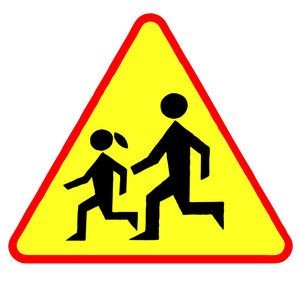Recently, officials with the Patrick Administration joined local leaders, parents and students to celebrate the completion of pedestrian access and safety improvements at Swampscott’s Stanley Elementary School.

According to the Massachusetts Department of Transportation (MassDOT), officials spent nearly $300,000 on the project to help create better sidewalks that are better connected to the school. The project walk helped to improve sidewalks and modified curbs to help reduce the number of pedestrian crossings. There were also new pavement markings throughout that school zone and traffic will now flow “one way” during school hours. All of these improvements were designed to help to eliminate the risks of child pedestrian accidents in Swampscott.
“MassDOT’s Safe Routes to School Program is a critical part of our commitment to healthy and sustainable transportation options, resulting in healthier students, happier parents and safer roads for bicyclists and pedestrians,” said Richard A. Davey, MassDOT Secretary and CEO.
In the state of Massachusetts, pedestrian injuries are the second leading cause of unintentional injury death among school-aged children 5 to 18 years of age. Each year, there are approximately 11 deaths and more than 1,300 nonfatal pedestrian injuries in this population. Adolescents, 15 to 18-years-old, have the highest rates of nonfatal pedestrian injuries compared with their school age counterparts. Boys are also 1.5 times more likely to be injured as pedestrians than girls, according to Massachusetts Health and Human Services.
There are many design considerations for pedestrian safety whenever a road is reconstructed. Officials should design intersections to minimize crossing distances and vehicle speeds, while maximizing visibility are priorities whenever roads are reconstructed. Tightening corners can slow down turning vehicles, making an intersection safer for pedestrians of all ages. Curb extensions can serve several purposes. They can work to reduce turning speeds, eliminate illegal parking within twenty feet of an intersection, make pedestrians more visible to vehicles and reduce pedestrians’ crossing distance.
Did you know most walking injuries happen mid-block or someplace other than intersections? Whenever possible, cross the street at corners, using traffic signals and crosswalks.
Also consider following these safety tips:
-Always look left, right and left again before stepping out onto the street to cross the road. Continue looking left and right as you cross the road.
-Never run across the street. Always walk carefully.
-Whenever there is a sidewalk available, use it.
-If you have to use the phone or text message, stop before doing so. Avoid distracted walking.
-Make sure to always cross the road at intersections and in crosswalks.
-Remember to follow all road signs and lights.
-Whenever walking in the dark, make sure you’ve got a flashlight, reflective materials on your clothing or are wearing bright-colored clothes.
-Never allow children under the age of 10 to walk unsupervised.
-Talk with the children in your family frequently about safe walking habits.
If you or someone you love has been injured or killed in a pedestrian accident, contact Jeffrey S. Glassman for a free and confidential consultation to discuss your case. Call (617) 777-7777.
More Blog Entries:
$150 Million for 13-Year-Old Who Lost Family in Fiery Car Accident, Boston Personal Injury Attorney Blog, November 3, 2013
Pedestrian Seriously Injured in 3-Car Accident on Sidewalk, Boston Personal Injury Attorney Blog, October 31, 2013
 Boston Car Accident Lawyer Blog
Boston Car Accident Lawyer Blog

